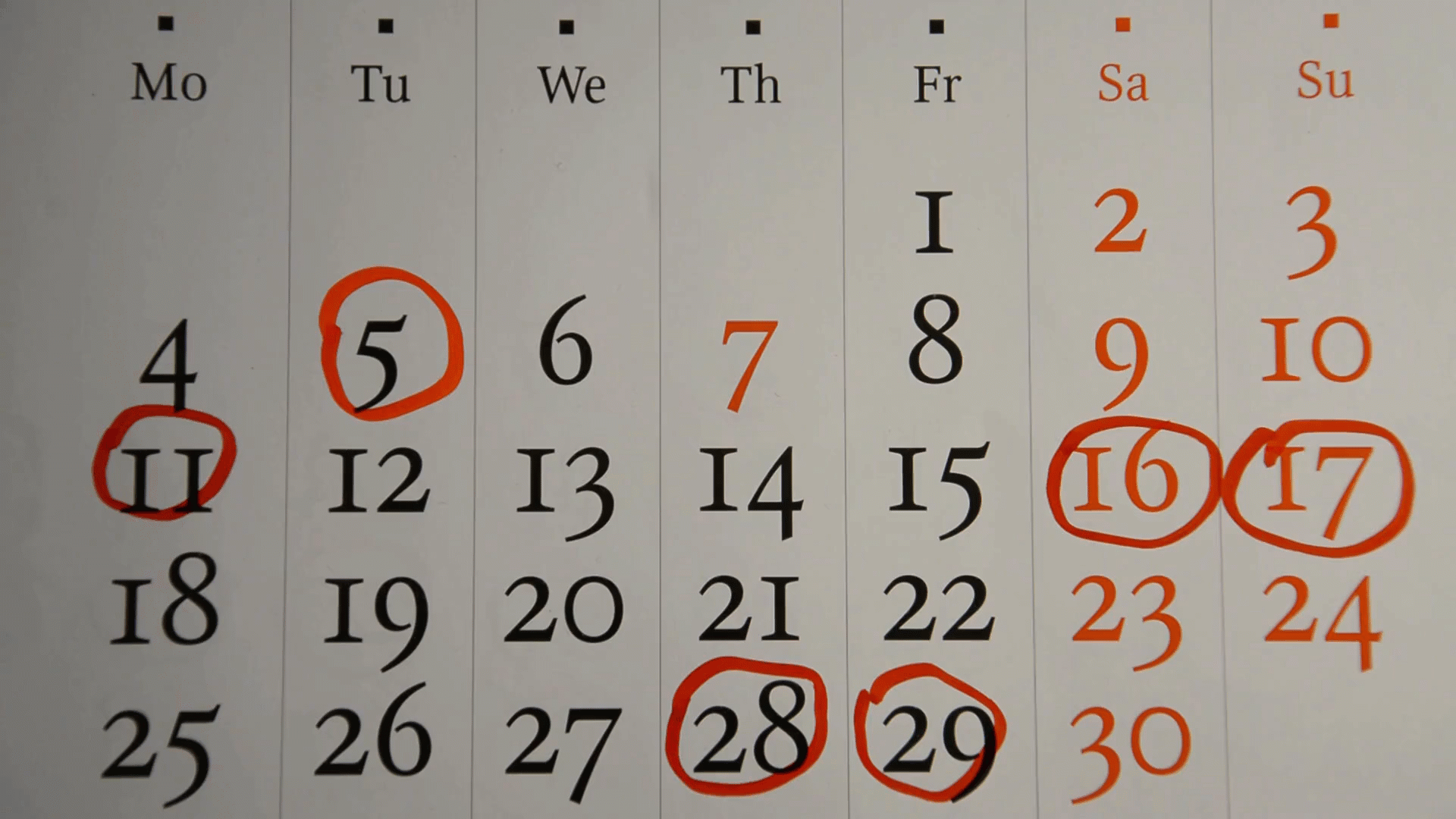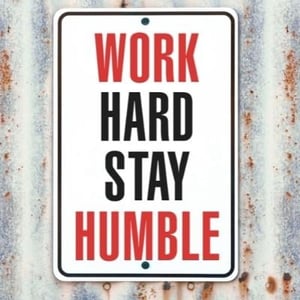Appointment Setting 101:
Tips, Tricks, and Insider Talk
from B2B Sales Superstars

Appointment setting success: Are you underestimating your SDR?
For most B2B companies, the appointment setter — whether they’re called an SDR, a BDR, or a designated dialer (we’re kidding about that last one) — starts the entire revenue process.
In a sense, SDRs (in this book, we’ll use this term interchangeably with “appointment setter”) are the vanguard of your sales campaigns. The front line; the first point of contact.
Yet there are still those who think the SDR role is a semiskilled one at best — a sort of receptionist or assistant to the real salesperson. And there are plenty of conflicting opinions about what exactly appointment setters should do, when they should hand off a prospect to an account executive (AE), whether to outsource appointment setting and how best to leverage this kind of team (no matter if it’s in your office or across the country).
So we gathered four sales superstars (lead-gen royalty, really) for some real talk about effective, proactive appointment setting for B2B companies.
In an eye-opening conversation moderated by VanillaSoft Chief Revenue Officer Darryl Praill, David, Nancy, Rick, and Ryan give us an exclusive look behind the scenes of the appointment setting space — and their insider advice on how to build your own empowered, exceptional sales team.
Download to Read Later

Nancy Calabrese
Founder and CEO,
One of a Kind Sales
Nancy began her career in corporate recruiting before pivoting to sales with the launch of her lead generation company, One of a Kind Solutions, in 2011, which was rebranded One of a Kind Sales in 2018. She's passionate about a properly executed pre-sales process. She specializes in consultative selling and training teams to execute a thorough pre-sales process and an engaging approach to cold calling.

David Kreiger
President
SalesRoads
SalesRoads began in 2007 when David proposed a remote-first appointment setting service as an entry in the Wharton School’s Business Plan Competition. Nearly 15 years later, SalesRoads is an INC 5000 list company with more than 400 corporate clients, including Microsoft, Sharp, and Shell.

Rick Endrulat
President and Co-founder,
Virtual Causeway
Founded in 2001, Rick's company Virtual Causeway is a leader in sales and marketing services for medium-to-large technology businesses. He is a Quantum Shift Fellow with the Richard Ivey School of Business at the University of Western Ontario and a member of Wilfrid Laurier University President’s Council of Advisors. Rick is also a two-time winner of the Lazaridis School of Business Entrepreneurship and Innovation award.

Ryan Pereus
Founder and CEO,
Superhuman Prospecting
Before launching Superhuman Prospecting in 2017, Ryan founded H2H Sales Scripts (which stands for "human-to-human.") But he first began writing custom sales scripts online for $5 apiece. Today, SHP has 40 employees and runs campaigns for more than 70 clients every month.
Why the humble SDR is an integral part of the sales process
 You know what they say: Opinions are like @$$h*les — we all have one. And in B2B sales, it seems everyone has a very strong opinion about SDRs. Some folks say appointment setting is a difficult, thankless job. Many think it's a tough job to staff, especially on a tight budget. But our experts agree: Appointment setting is essential.
You know what they say: Opinions are like @$$h*les — we all have one. And in B2B sales, it seems everyone has a very strong opinion about SDRs. Some folks say appointment setting is a difficult, thankless job. Many think it's a tough job to staff, especially on a tight budget. But our experts agree: Appointment setting is essential.
Appointment setting benefits: It all starts with the SDR
“No appointments, no sales,” says Nancy. “You need to have an appointment to get an opportunity to move the conversation along, to generate new business.”
It's just that simple. But that doesn’t mean it’s easy. In Nancy’s opinion, appointment setting is the most difficult part of the sales process.
“It should be nurtured. It should be developed. It's critical to any company's pipeline,” she notes.
Ryan agrees and adds that setting appointments is especially crucial for outbound sales: You're starting from zero (either no interest, no knowledge of your company, or both). So the appointment setter has to generate momentum.
But there’s a distinct advantage to either building or outsourcing an outbound appointment setting team: You have greater control over your sales. Outbound allows you to inject your direct influence into the marketplace.
“If you can target right and get your messaging right, you have more control over your market than with inbound; when you have to compete with other vendors or prior experiences folks have had,” says Ryan, who notes that appointment setters have the ability to “convert a conversation.”
To outsource or not to outsource
If you’re in charge of sales for a startup or a growing company, you’ll probably ask yourself this question at some point. Should we build an in-house team from scratch, engage a contractor to help us, or outsource the process entirely? If you opt for one of the latter two, when is the right time to seek a partner? Our panel answers those questions with... well, another question:
Where are your leads coming from now?
David thinks it depends on your organization and its stage of growth, its trajectory, its priorities, and its sources of sales leads right now.
Often, companies that are early in their lifecycles (and occasionally those that are in later stages) win plenty of deals through inbound, through their networks, or through referrals from current clients — all great ways to get sales. Some older companies develop processes around these kinds of leads, and it works for them.
But to rely solely on inbound leads, your existing network, and client referrals is to treat leads as predictable and perpetual. Spoiler alert: That’s not a great idea now or in any economic climate.
“It's harder to create a predictable element in the sales process through inbound or through referrals,” David adds. “It's much easier to do it through outbound.”
However, outbound selling is a skill set all its own. And to do it well requires a healthy dose of patience and discipline. What could be better than a team of cold-calling veterans who specialize in outbound appointment setting, who do it all day with laser focus instead of being pulled in dozens of different directions... (like the rest of your sales team)?
Crush objections and level up SDR effectiveness
Your frontline reps are only as good as the training, support, and guidance you provide. Their work is valuable; treat them accordingly.
Training is powerful
 Nancy and her team at One of a Kind Sales are big believers in ongoing sales training, and make no mistake: “Appointment setting is selling,” she says (one more time, louder, for everyone in the back).
Nancy and her team at One of a Kind Sales are big believers in ongoing sales training, and make no mistake: “Appointment setting is selling,” she says (one more time, louder, for everyone in the back).
She has spoken with plenty of people who don't view an appointment setter as a salesperson, but “they definitely are,” she adds. “And they've got the challenge to ‘go to close’ in a shorter period of time than full cycle sales.”
David believes “training infrastructure ... is where the magic happens.” It serves as a kind of locomotive engine that creates its own momentum. As SDRs accrue more knowledge, they gain confidence and build expertise that shines through when they speak to potential buyers.
Objections are inevitable
Because SDRs are the first line of defense (as well as offense), they deal with objections on a daily basis — often, more than the sales folks who are better trained to address them.
Rick says the best way to meet objections is to build trust. When he and his partners launched Virtual Causeway in 2001, most people didn't trust the concept of outsourcing at all. The objection was usually: Why would I *not* do this in-house?
But over the years, many of Virtual Causeway’s clients have realized it’s a smart move, especially growth-stage companies that need to focus their efforts on building their product, not booking demos.
A common objection arises over the time it takes to see significant ROI.
Ryan manages clients’ expectations by telling them not to expect an ROI from Superhuman Prospecting's appointment setting services in the first month of working together. That’s based on market research, even among similar clients. There are always variables that make each company unique.
Rick thinks collecting and tracking data is an essential part of appointment setting, both to set expectations and to iterate based on results. If you're working with a client with an 18-month sales cycle, a few appointments won’t impact the bottom line until the cycle is complete. However, if you constantly monitor your financial data and other metrics and ensure a tight feedback loop between teams, you can adjust almost any aspect of your sales process to maximize efficiency, pivot away from potential problems, and take advantage of new opportunities.
Forge a true partnership
Ryan thinks of an SDR team’s collaboration with AEs, marketers, and other colleagues as a long-term relationship. He tells clients that, “while this is a service business, it's not like getting your oil changed. It’s a partnership. We become your outsourced team, not just a service that delivers you appointments.”
Ryan says one of his favorite aspects of his business is the focus on education, particularly when a client hasn’t done outbound sales before: “Typically the way we find our wins – and ultimately our clients’ wins — is through helping them understand what outbound appointment setting is and how it might be different from their expectations of an inbound sale or inbound lead.”
Rick characterizes the relationship as “a shared partnership, rather than just handing something over to an outsourced partner.”
Put simply, the most valuable output of a good SDR/appointment setting team might not be the appointments themselves. The results of an individual call might result in just one (or maybe several) levels of understanding a lead — “but whatever it is, it’s additional intelligence that's going to help the sales process,” says Rick.
Knowing that a piece of intel is actually the best outcome — and that your SDRs will press for it — goes back to the need for trust.
Listen to your team
David thinks that, by asking how we can make appointment setters more effective, we might be looking at the question... backward.  In his own organization, he has found that asking his own SDR team — “the folks who are on the front lines” — is one of the best paths to optimizing its processes.
In his own organization, he has found that asking his own SDR team — “the folks who are on the front lines” — is one of the best paths to optimizing its processes.
When he listens to recorded calls between appointment setters and prospects, he sometimes hears “an amazing approach or a way to handle an objection.”
He has also found that they have great responses to objections via email. It’s important to recognize that because SDRs are the first touch with so many potential buyers, they have a lot of insights on how to respond to prospects.
“They're on the ground level,” says Ryan, who cites Stephen Covey’s concept (put forth in the book The Seven Habits of Highly Effective People) of “sharpening the saw”: constantly refining your processes and using benchmarks to measure progress. The advantage of using a specialized cold-calling firm like Superhuman is that its teams are always learning.
“While we have goals in mind, and we want to completely crush those goals, we take a snapshot of where we are. We look at the whole gamut in order to scrutinize every part of it. Is the script right? Is the target right? Is the appointment setter right? Is the value proposition correct? All these things are consistently under the magnifying glass.”
In that way, the process is constantly improving, and there’s always a way to build on results.
David reiterates the importance of treating SDRs as sales reps, encouraging them to share their perspectives, and seeking feedback on a regular basis. It's a good practice, of course, to treat every employee this way, and make it clear that your company is inclusive and supportive; that everyone has a voice.
"Building that culture throughout our organization has been critical in optimizing all of our campaigns," he says.
Pro tip: Invest in training your SDRs and equip them to overcome common objections. Treat an outsourced team like real partners that way you’ll uncover all sorts of intel that drive future sales.
Smart strategies for leading a B2B sales development team
You can tackle B2B sales appointment setting in a number of ways: Choose to go 100% outbound, use a combination of outbound and inbound, or use an account-based approach. The nature of what you sell, and the sales methodologies commonly used for each come into play, of course.
Selling a product that’s a long-term investment is a different transaction than selling a service that provides recurring revenue, like a subscription. But the strategies our experts share are relevant to virtually everyone.
 Say it with us: Integration!
Say it with us: Integration!
Rick thinks that appointment setting should never exist in a vacuum: “It's not a silo,” he says.
Because it's part of a business' sales function, make sure appointment setting is integrated with your other activities and priorities. Look for ways to synthesize your sales development with the efforts of your marketing or other sales teams that focus on account-based strategies. Consider all the human and digital touchpoints a buyer encounters on their journey.
Map those points, look for the best places for your SDR team to get involved, and collaborate on key content pieces at each of those stages so the client experience is cohesive throughout.
Fine-tune your lists and match them to your ICPs
It might seem intuitive, but David says clients miss it all the time — "making sure you've got a bespoke list," he says. "Our clients may say they've got a great list … but they give it to us and it's old, or it's not well targeted."
So take the time to refine your lists and check them twice against your ideal customer profiles.
"One of the beauties of appointment setting is getting to proactively reach out to exactly who you want to speak with, not the other way around (with inbound)," David adds. "Make sure your appointment setters or SDRs are calling the right people."
Don't skip the script
One way to ensure cohesion is through messaging, which can be anything from an email to a video or a call script. Nancy says plenty of people in the sales game don't believe in scripting, but at One of a Kind Sales, they "very much do.”
A script encourages the sales rep to become an actor, delivering the message with enthusiasm and confidence that might be difficult to muster otherwise. Plus, it helps the appointment setter focus on listening to the prospect instead of thinking about what they're going to say.
It's evergreen advice but it bears repeating: You want to make the call about the buyer, not yourself.
"Our mantra is: We never go into 'sell mode,'” says Nancy, who wants prospects to talk about their pain points and to get emotional, too — "because people buy based on emotion," she adds. Plus, if you record calls (check your local laws and those of your prospects’ region before recording), it's an invaluable training tool that markedly improves SDRs' performance over time.
Pro tip: Think of your SDR team as one (critical) part of a holistic, all-hands-on-deck approach that's collaborative — and consistent.
The SDR secret sauce
Some might call it an "unfair advantage," their "code to success" or "cleverly concealed flask." We asked our guests to spill theirs. Here’s what they had to say about setting up SDRs to achieve optimal results.

❌ Cold calling 101: Don’t sell straight away
Nancy’s secret sauce is to differentiate her team’s approach by “sounding very un-salesy — and being unattached to the outcome.”
She trains her sales reps to “do everything we can not to have the sales wall go up.”
As a bonus, “it makes prospecting more fun” and leads to more relaxed appointments down the line.
✅ Refine those lead lists
Getting in front of the right people is the most important part of appointment setting, says Rick.
“If you can't get that, your messages don’t matter. It doesn’t matter how good you are on the phone. It doesn't matter how good your scripting is. If you're talking to the wrong person or you're marketing to the wrong person, you're done.”
❌ There’s no magic bullet — it’s a lot of little things
“I don't think there is a specific secret sauce that can be laid out on a call like this,” David says.
That’s because your sauce, so to speak, will be proprietary — one-of-a-kind, like the recipe for Coca-Cola. It's about “finding the right mixture for your company, for you as a manager, for you as a team, the type of culture that you're building, the kinds of processes you're putting into place, the style of coaching you have.”
✅ Prioritize what works
Ryan disagrees, at least a little bit, with David’s theory that because every company is different, your sauce should be custom-mixed.
He thinks the real sauce is that “you have to prioritize what's going to convert,” he says. “You only have so much time in a day. Appointment setting takes a lot of time ... what's going to make the most impact?”
Pro tip: To set your SDRs up for success, do more of what works and go after the right targets. You’ll also want to encourage your SDRs to pace themselves.
The B2B sales pros' tip sheet
 Here are the most incisive, shareable truth-bomb takeaways our panelists had to offer on mindset, persistence, tech tools, and cold calling.
Here are the most incisive, shareable truth-bomb takeaways our panelists had to offer on mindset, persistence, tech tools, and cold calling.
View the lead as your peer
Advice to appointment setters: Think of yourself on the same level as the person you're calling. If you consider yourself to be a mere worker bee — “below” the decision-maker you’re talking to, you won’t project confidence and garner trust. Don’t let yourself feel intimidated by the buyer.
“If we talk like that, they're going to treat us like that — they treat us as if they don't need us. So if we act confident, they'll listen to us more and we can have more influence and impact in the conversation.”
“When in doubt, zero out”
This pearl of wisdom came straight from one of David’s frontline SDRs — which, again, underscores the value of listening to their experience and ideas.
Before his organization implemented this concept and started training its teams to use it, SDRs would call one contact over and over — “nine times, maybe, to get them on the phone,” says David.
They’d realize that the name on their list wasn’t actually a buyer, or didn’t work at the target company anymore, or for whatever reason wasn’t the right person to speak to. Now David’s SDRs always attempt to “zero out” on their first calls to prospects. If they can’t get the contact on the phone, they try to talk to a gatekeeper and gather information, like whether that person is still there and whether they have oversight over purchasing.
Basically, the SDRs do everything they can to confirm the information they have about a prospect before they “spend a whole bunch of dials and effort going after the wrong person,” David adds. “Sometimes gatekeepers are amazing. They'll give you cell phone numbers; they'll give you direct dials.”
Embrace (and invest in) technology
Find a technology platform that can reinforce and sustain your sales process at every stage. As you build out your appointment setting function and refine it, “the right technology can support you and enable your team, instead of being something that holds them back,” says Rick.
“Cold calling is not dead”
Always the one for a mic drop, Nancy says: “If you're not doing it, you're leaving money on the table. And the human conversation always wins."
You never get a second chance to make a first impression…
And in a hyper-competitive B2B sales marketplace, it's more important than ever. So remember: Appointment setters are salespeople, too.
If you can fine-tune your processes, provide them support, encourage collaboration with other teams, and use technology to optimize it all, sales development reps can deliver qualified sales opportunities to your closers.
And get ready for a domino effect. Your sales teams with expertise in the later stages of the buyer journey will experience a boost in morale, productivity, and probably revenue, too.
Save the date: You're due for a major upgrade of momentum.
Turbo Charge Your Appointment Setting
Want to get the secrets to these appointment setting tips and tricks right from the sales experts themselves? Watch as this all-star team shares their top appointment selling strategies - those tips and tactics that have kept them at the top of their field. Watch on-demand now!